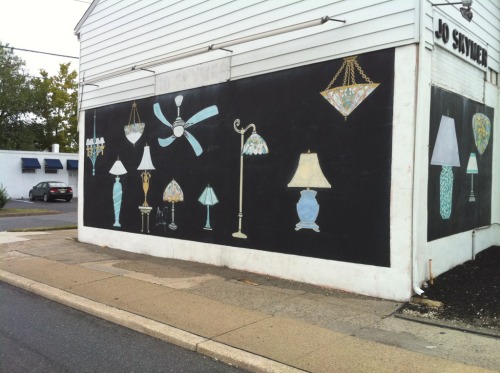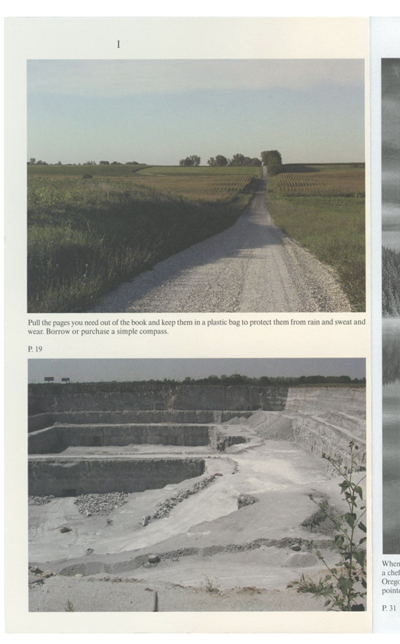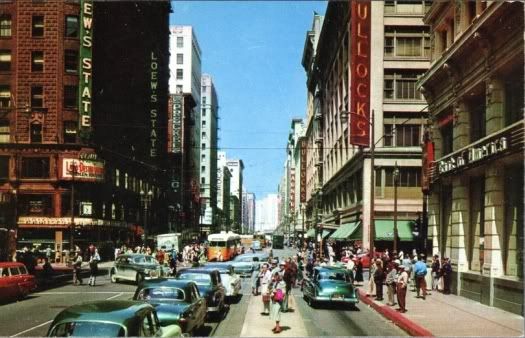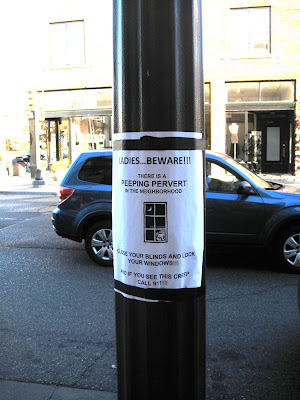 [Obama speaking on the University of Minnesota campus, October 2010.]
[Obama speaking on the University of Minnesota campus, October 2010.] President Obama is coming to the University of Minnesota campus today, in a last ditch pre-election attempt to get college students to go out and vote. It's safe to say it will be a milquetoast affair. Obama will essentially be saying, “hey kids, actually care about our political democratic process! Look at my record of non-confrontation and barely-discernible improvements in a few select areas of government, and get out there and vote.” Meanwhile, “young Republicans” will be staging some sort of Karl Rove-inspired bowtie-loafer 'counter-protest', with the galvanizing slogan: “Hey! Remember 2 years ago? We don't either!”
Campus politics just ain't what it used to be. There was a time when college campuses all across the state, and all across the country, were petri dishes of radical politics. They were places that politicians feared to tread. Students were strong, and seemed to make a big impact on the national political scene. And there was a time when the University of Minnesota was a hotbed of political protest second only to Mankato.
 [The police and students mix it up during the May 1972 anti-war protests on the University of Minnesota Campus. Img MNHS.]
[The police and students mix it up during the May 1972 anti-war protests on the University of Minnesota Campus. Img MNHS.]Unless you hang around
the Mayday Bookstore, you probably don't know the whole history of the 1972 anti-war protests. The old coots that hang out in that place love to talk about it. But outside of those too-cozy confines, you'll never hear any mention of the role that student groups had in pushing state institutions to resist Nixon's escalation in Vietnam. Back then, there were all sorts of groups that were actively involved in thinking politically on the University of Minnesota campus: just to name a few, you had the Students for Democratic Society (SDS), “The Trots” (Trotskyists), Young Socialist Alliance (YSA) and their upstart faction called the New American Movement (NAM), the Committee of Concerned Asian Scholars (CCAS), the Minnesota Peace Action Coalition (MPAC) / Student Mobilization Committee (SMC). In retrospect, especially given today's more apathetic political landscape, what the U of MN students did back then was pretty unbelievable. They practically shut down the entire school, and took over the streets (and even, for a little while, I-35W!) around the U campus.
 [An anti-war rally on the University of Minnesota campus, May 1972. Img MNHS.]
[An anti-war rally on the University of Minnesota campus, May 1972. Img MNHS.]Wednesday, May 10 [1972], was the day the people finally determined to take the streets.
The noon rally on the steps of Northrop drew over 2,000. There was very little need for talk. The first clear objective, the Air Force Recruiting Station in Dinkytown, was almost immediately agreed upon. We marched to shut it down for good. … There were over 1,000 of us gathered in the streets in front or the Air Force Recruiting Station. Some went upstairs to check it out. The Air Force had moved out. They had taken just about everything. We burned the few remaining cardboard life-size smiling posters.
We were blocking the streets, and this meant that inevitable Tac Squad [the city cops] would soon be upon us. … The next step was, obviously, to retreat of the ROTC Armory. … As soon as the Tac Squad became visible, people started moving to the Armory. It was about a half mile away and presented an interesting jurisdictional problem for the Minneapolis police. … When we got to the Armory, there were over 3,000 of us. They locked the doors. We could not get in. Some people smashed windows and kicked at the doors. Some of those who broke the windows were later identified as plainclothes policemen. There were at least half a dozen plainclothes policemen standing around surveying the scene.
We were uncertain about hot to deal with the Armory. Some wanted to burn it down. Others simply wanted to shut it down. …
At that point the logical thing for us to do seemed to be to set up barricades on University Avenue to talk to the police. Elsewhere in Minnesota, students had been stopping traffic to bring home the point that war had to be stopped. The wrought iron fence in front of the Armory was torn down. Sections of the fence were used to form a crude barricade. The concrete pillars attached to the fence, weighing several hundred pounds, were torn out and laid in the street.
 [A barricade on Northrup Mall, May 1972. Img MNHS.]
[A barricade on Northrup Mall, May 1972. Img MNHS.]
[…]
By 1:30 pm the Tac Squad made its appearance. They marched up University Avenue. When they got to the barricade they drew their mace and started to spray the demonstrators that had stayed up near the barricades to talk to them.
[… the crowd moves to Washington Avenue...]
Ad advance group went up to Washington and Oak Street, about three blocks away. These 500 detoured traffic at this major intersection. This was a 2:30 pm. They sat in the street. Traffic stopped and the motorists were politely told, 'We're trying to stop anything and everything, until we can stop the war'.
 [Students and police face off on Washington Avenue in May 1972. Img MNHS.]
[Students and police face off on Washington Avenue in May 1972. Img MNHS.]
At 3:00 pm the Tac Squad came again with mace and riot clubs. They pushed the Oak and Washington contingent out of the streets. By now they were tired and angry, so they were especially brutal.
[…]
The crowd retreated onto the Mall. … The police fired tear gas canisters into the Mall, and the people on the Mall threw them back at police... We backed up to Dinkytown, and a small group sat down in the street blocking the major intersection at 4th Street and 14th Avenue.
By now the Tac Squad was too pooped to play.
They packed up and went home. But, as a parting shot, a police helicopter sprayed tear gas into the crowd.
[…]
By 4:30 pm people had again moved onto Washington Avenue. One of the first things we did was to tear down the chain link fence dividing the lanes. This fence blocked our options of going either way to escape a Tac Squad advance.
[…]
We built a barricade across Washington Avenue at least ten feet high and ten feet wide out of anything we could find: the chain link fence, saw horses, trash cans, cement blocks, scrap lumber, snow fences and telephone poles. We built a smaller barricade a block down from the first to prevent the police from too easily slipping in behind us.
According to the rest of the story, detailed in Ed Felein's short and well-illustrated book
Take The Streets (available for $8.50 at Mayday Bookstore), the University Students held this position, shutting down Washington Avenue, for two days. And during this time, a host of politicians and University officials came to discuss and negotiate with them, including Senator Eugene McCarthy, college president Malcolm Moos, Minneapolis Mayor Stenvig, and others. Eventually, after two days, the protesters left Washington Avenue and joined a larger anti-war march to the State Capital in Saint Paul.
My point isn't to talk about the politics of the Vietnam war, or about whether or not this kind of activism is ultimately useful or harmful. But I'm simply amazed at how far removed this event was when compared to student politics today, when compared to something like today's Obama rally.
Sure, today, you can still find plenty of activists pushing civil disobedience and direct action. In fact, it's not necessarily a big difference in terms of numbers. There were only a few thousand students who were actively involved in this Washington Avenue take-over, a small fraction of U's total population. And this is not to suggest that 'everybody' was unified about tactics and approaches during the 1972 action. Felien goes into great detail about the debates and disagreements between different student groups, and also quotes a contemporary newspaper poll which suggested that a (slight) majority of folks in the Twin Cities disapproved of the student's actions.
But does anybody think that this kind of action, where students actually take over the spaces and streets of the University, could happen today? Nowadays, when students riot its because the hockey team won a championship. Or, its simply because of boredom.
What has changed about student politics? Are University students really so different today than they were in the 70s?
I've a few ideas, but this is really an open question.
First, the draft made a huge difference. The fact that anyone could be drafted, and that young males could be forced into service and sent over to fight and die in Vietnam against their will, surely made US wars far more personal for young people. It attached US empire directly to the body in a way that probably kept a lot of people from sleeping, and compelled folks to care about larger issues. This is really important, and the lack of a draft is a big reason for apathy about US conflicts abroad. Now, the people who join the army are, for the most part, 'volunteers' from a select population of people, those who have very few choices in life. At the same time, the University has, over time, become more and more a place for only those who can afford the ever-increasing tuition. People who fight in US wars and people who go to the U are more and more different groups of people.
Second, the media landscape has changed. Felien's book is filled with photos of newspaper coverage of the protests, which was splashed all over the front pages of the Minneapolis Star and the Minneapolis Tribune. [Two separate papers, at the time.] Today, its very difficult to find reporting about civil disobedience. Local newspapers are a shadow of their former selves.
Third, police power has changed, to become more effective at projecting 'non-lethal force'. The liberal use of Tasers (see
the recent Taser fatality at a Minneapolis YMCA) and other forms of violence make it far harder to effectively combat the state in ways like this.
Anyway, on this the occasion of Obama's visit to the University, I thought it was interesting to raise the question of campus politics in general. The history of student protest at the University of Minnesota is a story rarely told. I'd bet most students have never heard of it. Are things so different today than they were in 1972?
 [A bunch of dirty pinko hippies on the University of Minnesota campus, May 1972. Img MNHS.]
[A bunch of dirty pinko hippies on the University of Minnesota campus, May 1972. Img MNHS.]
 Sidewalk Rating: Why the hell not? Trick or treat!
Sidewalk Rating: Why the hell not? Trick or treat! 













































